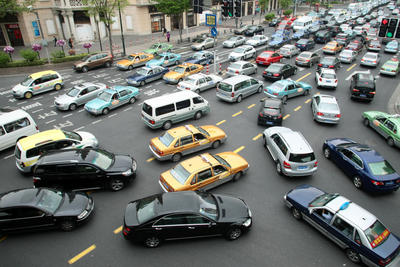The hike in the terms of trade has lifted Australian incomes by around 10 to 12 per cent in the past ten years. It’s not just Australia; the whole world seems nervous about the collapse of Chinese growth.
There are a number of problems that confuse analysis of the impact of Chinese growth on global demand for commodities and the global economy. Many market analysts are not tooled up on basic Chinese economic data (whatever its deficiencies) and don’t know how to interpret it well. There are problems in sorting out the difference between short-term cyclical changes and long-term structural trends. The normal economic cycle produces ups and downs in production and stocks; the longer term growth of production and capacity is driven by a different set of factors. Some of the important forces that affect markets and prices, like those for commodities, originate not in China but in supplier countries. Certainly the changes in the commodity terms of trade will be influenced greatly by what the supply response to high prices is in Africa or Latin America and Australia as well as what is happening to the demand for steel in China. Unravelling these short and long term perspectives on what’s going on in the Chinese economy, and the international market response to it, is a critical starting point in understanding what that might mean for international markets and policy makers alike.
Yiping Huang, in this week’s lead essay, provides a reality check to thinking about China’s medium to longer term growth prospects. Growth of Chinese GDP has decelerated from 9.6 per cent a year ago to 7.8 per cent in the first half of 2012. But, Huang notes, the government has remained calm about this gearing down, with only minor adjustments in policy that aimed at stabilising growth. The Chinese government’s ‘policy paralysis’, as it’s been called, appears odd given the emphasis on GDP growth in the past. A common interpretation is that policy makers are ‘way behind the curve’ because of the once-a-decade leadership transition.
But, Huang reckons, it is unlikely the Chinese government is simply ignoring the growth risks. A more plausible explanation, he believes, is the underlying view among officials that the current growth downturn is structural in nature as much as it is cyclical.
This view is founded on the assessment that the economy’s potential rate of growth has already scaled back, from 10 per cent in 2000–10 to an estimated 8 per cent over 2010–20, and will slow further to 6 per cent over 2020–30. This assessment is consistent with the idea that as China transitions through middle-income levels (China’s average income is already over US$5,000 per capita) towards catching up with higher income industrial countries, its rate of growth will steadily slow. If this assessment is right, then the 7–8 per cent range may have become the ‘new normal’ rate of growth for the Chinese economy. In any case, the government has already revised its GDP growth target down to 7.5 per cent in 2012, from 8 per cent in previous years, and may wind it back further to 7 per cent in 2013.
Policy makers learned a lesson with the stimulus package in 2008 and are reluctant to adopt aggressive expansionary policies this time round. For the past several years, the government’s massive investment programs have been criticised for increasing financial and fiscal risks. Many government officials speak regularly about the need to tolerate slower growth in order to underpin its sustainability. The policy objective of stabilising, rather than boosting, growth in the face of increasing downside risks to the economy now dominates policy thinking.
This slowdown is indeed very different, as Huang points out, from the slowdowns in previous cycles. In the Asian financial crisis, the rapid deceleration of growth also saw the loss of large numbers of jobs and inflation turn into deflation. But this time around, in the first part of this year, the economy has created 8.2 million jobs and wages have increased by 15–20 per cent in most major cities. This signals China’s economic maturation and the appearance of job shortages. If the economy is to continue to grow, even at a more moderate rate, it has to graduate from simple manufacturing production relying on the mobilisation of labour to industrial upgrading driven by high rates of human capital formation and research and innovation. It is natural that an economy’s growth rate declines as it moves closer to the world technological frontier. China’s economic rebalancing looks to be underway.
Does this foretell the collapse of Chinese economic growth? Hardly, with the Chinese economy likely to continue to grow at around 7 per cent, that will roughly double the size of what is now the second largest economy and make it the largest economy in the world within a decade. And, in the short term, there is evidence that Chinese growth is likely to pick up in the fourth quarter of this year.
Peter Drysdale is Editor of the East Asia Forum.

